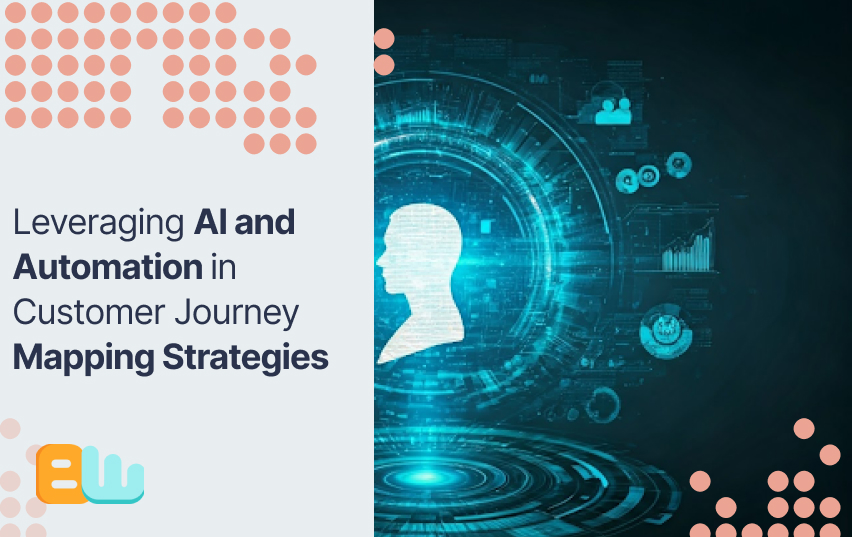
Artificial intelligence (AI) is improving customer journey mapping. Adding AI to this process changes how businesses connect with their customers, creating opportunities for more personal and engaging experiences. This new change helps companies go beyond old ways of doing things. They can find deeper insights from their customer data, leading to stronger and more successful strategies for customer engagement.
Understanding the Role of AI and Automation in Customer Journeys
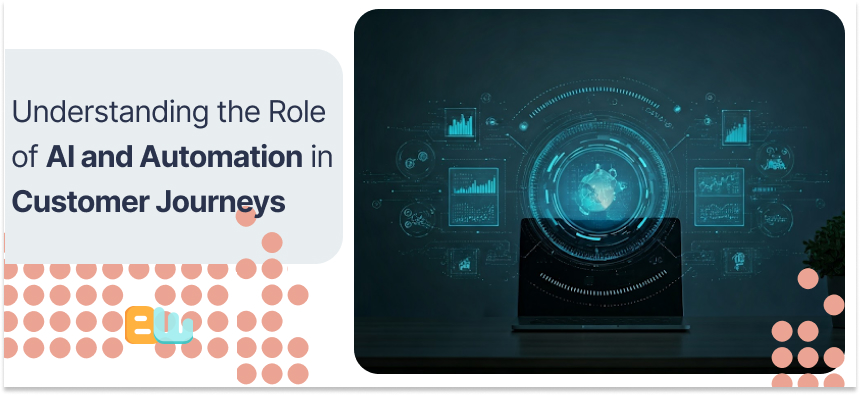
Artificial intelligence and machine learning are important in today’s world. They help us understand how customers behave and improve their journeys. AI can analyze a large amount of customer data, such as website visits, social media interactions, and past purchases. By examining this data, AI finds valuable patterns and trends. Businesses can then more clearly see customer behavior, likes, and possible issues.
AI can do even more than just look at what happened before. It uses predictive analytics to guess what customers will need in the future. This lets businesses spot problems early and suggest solutions fast. They can also make their interactions more personal and fit each customer’s individual journey.
The Evolution of Customer Journey Mapping
Customer journey mapping has changed a lot since its beginning. Traditional methods used basic customer experience maps, which often relied on guesses and little data. While they could help show a simple customer journey, they didn’t have the detail or flexibility needed for today’s fast and digital market.
With AI and big data, a new way to map customer journey exists. Companies can collect and study huge amounts of data from various sources, such as social media, online behavior, purchase history, and customer service logs. This rich data allows businesses to create detailed, dynamic maps representing today’s complex customer experiences.
How AI Transforms Traditional Journey Mapping Techniques
AI tools are changing how businesses understand and improve the customer journey. They allow companies to see beyond just tracking experiences. Now, businesses can anticipate and shape the journey in advance. Predictive analytics is key to this change. It helps companies know future customer needs and behavior based on past data and real-time events.
Imagine knowing a customer might face a problem before they even notice it. Then, you reach out with a solution before they call customer service. This proactive approach boosts customer satisfaction and creates personalized and engaging experiences. By recognizing customers’ needs and wants, AI helps businesses send targeted content, suggest the right products, and personalize messages. This makes every customer’s journey smooth and enjoyable.
Advantages of Integrating AI into Customer Journey Mapping
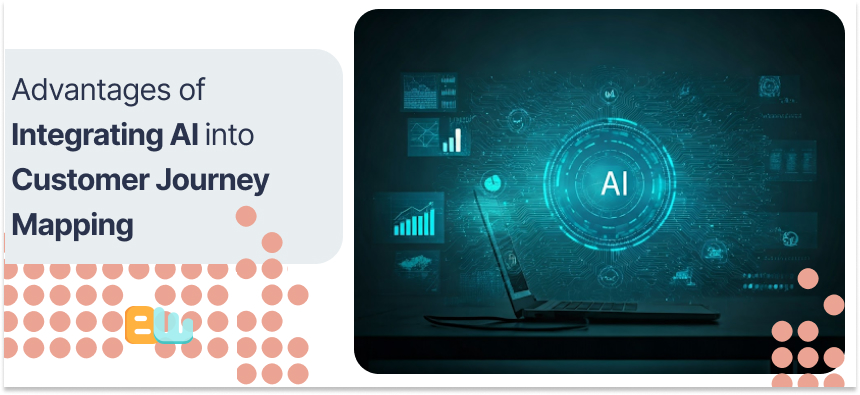
Integrating AI into customer journey mapping offers many benefits. It helps create a better customer experience. AI can analyze large amounts of customer data. It finds patterns and reveals hidden opportunities that traditional methods may not catch. These insights help businesses understand what makes customers happy. This knowledge leads to better decisions and more effective strategies.
Moreover, AI allows businesses to simultaneously provide personalized experiences for many customers, which is very important in today’s challenging market. Companies can customize every part of the customer journey using AI insights. This includes personalized content recommendations and more proactive customer service. Such personalization builds stronger customer connections and increases loyalty, resulting in a strong competitive advantage.
Enhancing Personalization at Scale
The ability to make experiences personal for many people is a significant change for businesses. This is important for building strong customer relationships and maintaining loyalty in today’s challenging market. AI plays a key role here. It can quickly look through a lot of customer data. AI algorithms can find patterns and small details in what each customer wants and needs, which would be hard for humans to do on the same level.
This helps businesses provide specific content recommendations, personalized offers, and quick customer support for each person’s journey. Imagine getting product recommendations that perfectly match your interests. Imagine a customer service agent who knows what you need before you say it. This personal touch makes customers feel valued and greatly improves the overall customer experience.
Streamlining Data Analysis for Deeper Insights
Businesses today have a lot of data to deal with. However, making sense of this massive amount of information can be difficult without the right tools. This is where AI comes in. It acts like a hardworking data analyst who can quickly and accurately analyze large data sets.
AI tools can analyze customer interactions, purchase histories, website usage, and other data. This helps find patterns, trends, and unusual activities that people might miss. A better understanding of customer behavior helps businesses identify opportunities to improve, improve marketing campaigns, create personalized offers, and even guess what customers might want.
Key Elements of AI-Driven Customer Journey Mapping
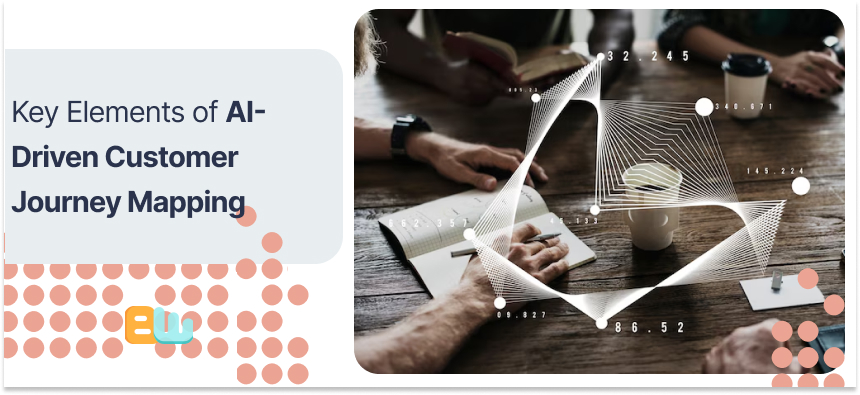
AI-driven customer journey mapping uses key components to help businesses better understand the customer experience. One component is predictive analytics, which allows companies to guess what customers will need and how they will act by examining past data and finding patterns. By knowing customers’ likely choices, businesses can fix possible pain points, improve customer touchpoints, and personalize interactions, creating a smoother and more enjoyable customer journey.
Another important part is real-time adjustment. AI can keep an eye on customer data all the time. This real-time feedback lets businesses change things quickly based on customer behavior. They can fix new problems fast and adjust to changing customer needs and wants. This way, the customer journey stays interesting and relevant at every touchpoint.
Identifying Customer Touchpoints with AI
Understanding the different points where customers connect with a brand is important for improving their experience. In the past, businesses relied on guesses and limited information. Now, AI tools help companies find and examine these points accurately.
AI can collect and analyze data from many sources, including websites, social media, email marketing campaigns, and customer service. By identifying patterns in these customer interactions, AI can identify the most common ways customers engage with a brand. Additionally, AI can uncover unexpected or not-so-clear touchpoints that can significantly impact the customer journey.
Utilizing Predictive Analytics for Future Behaviors

One helpful use of AI in customer journey mapping is predicting how customers act. By using predictive analytics, businesses can stop responding to past actions and instead guess what customers might want and shape their experience.
AI uses intelligent algorithms to analyze large amounts of historical data. It finds patterns that show how customers have engaged with a brand before. This data helps predict what customers will do next. For instance, AI can determine the chances of a customer buying something, possibly leaving, or liking specific marketing campaigns. With these predictions, companies can adjust their plans to meet future needs.
The Importance of Real-Time Adjustment Capabilities
Businesses can’t depend solely on old customer journey maps in today’s fast-moving digital world. Thanks to AI, they now need real-time adjustments. This technology allows companies to change and respond immediately to customer needs and behaviors.
Real-time adjustment tools offer quick feedback by monitoring customer interactions at various points. AI can send alerts if the customer service team has too many questions. This allows managers to adjust resources to handle the busy period effectively. Also, if AI notices that a part of a website is frustrating users, it can suggest instant changes to improve the user experience.
Practical Steps to Implement AI in Your Customer Journey Maps
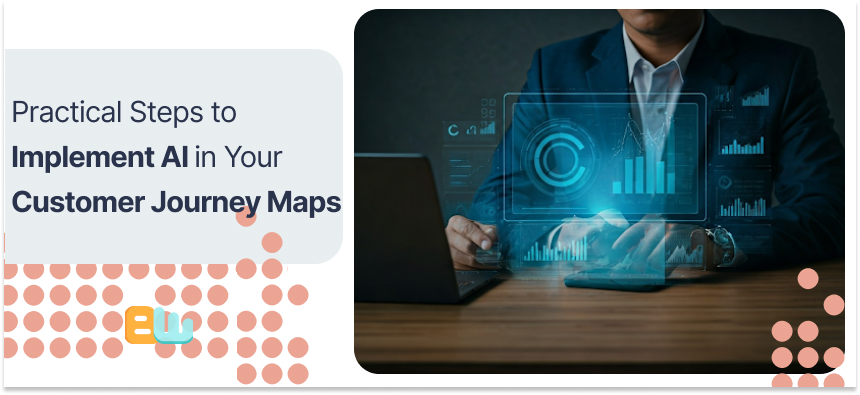
Good planning is essential for using AI in your customer journey maps. Start by setting clear goals. Then, determine where in the customer journey AI can help the most. Finally, consider which AI tools fit your business and work well with your current systems. By laying out your goals and picking the right tools, you can prepare for a successful AI setup.
Keep in mind that AI is not a quick fix. It needs careful planning and regular updates to reach its full potential in your customer journey mapping strategy. If businesses plan wisely and strategically, they can use AI’s power to create better, more engaging, and more successful customer experiences.
Gathering and Analyzing Customer Data
Effective use of AI starts with good customer data. You need a strong plan to collect data at every customer journey stage. Look closely at which data points match your goals. This will help you gather details that help you understand customer behavior and preferences.
Collecting data is just the beginning. It’s also very important to focus on data quality. Before using your data in AI models, clean and check it for mistakes and duplicate entries. This way, your AI algorithms will learn from accurate data, which results in better insights and predictions. Focusing on thorough data collection and strict quality checks allows AI to give you accurate insights and strong predictions.
Mapping the Customer Journey with AI Tools
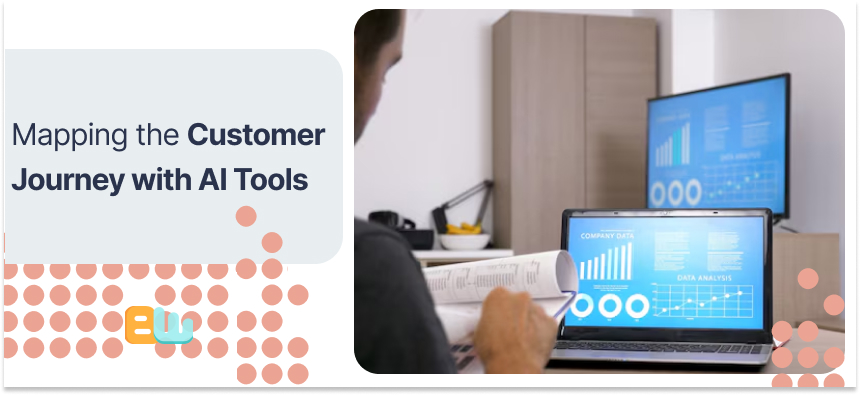
AI tools are great for making detailed customer journey maps. These tools can make the mapping process more manageable and help you find essential ways to improve the customer experience. Here’s how:
- Data Visualization: AI tools turn raw data into simple visuals, helping you spot patterns, trends, and pain points in the customer journey. You can use interactive dashboards and heatmaps to visualize customer behavior at different touchpoints.
- Predictive Modeling: AI can analyze past data to predict how customers will behave in the future. This includes predicting their likelihood of buying, whether they will leave, and how they will engage with campaigns. Use these guesses to personalize your messages, improve journeys, and make wise choices.
- Marketing Automation: Connect your AI customer journey map to marketing tools to create automated, personal campaigns based on customer actions or behaviors. This helps you keep your communication timely and relevant throughout the customer lifecycle.
Testing and Refining AI Implementations
It’s important to remember that even strong AI technology needs ongoing checking and adjustments. Use a solid testing plan to assess your AI’s effectiveness and identify areas for improvement. Start by trying different AI models and algorithms to find the best fit for your data and goals.
Make sure to check customer feedback and in-depth AI insights. This will help with strategies based on customers’ actual experiences. The input can also indicate that AI may not do well or be effective, so people need to get involved for personalized help. By adopting a mindset of continuous learning and improvement in your AI projects, you will continue to improve your efforts and make your efforts more precise and satisfying for customers.
Common Challenges and Solutions in AI-Powered Journey Mapping
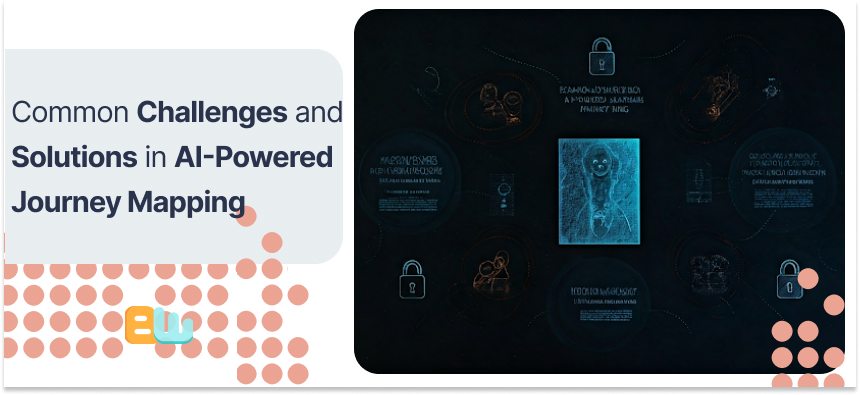
Using AI technology in customer journey mapping can be tricky. There are significant challenges to consider. Data privacy is a key concern. Businesses must ensure they secure data well and tell customers how their data will be used. There is also a need to improve skills in AI technology within businesses.
Companies can invest in training for their workers or work with outside experts to solve this. This can help close the knowledge gap and support the successful use of AI. By facing these challenges head-on, businesses improve the customer journey. At the same time, they can maintain maintain and follow good data practices.
Overcoming Data Privacy Concerns
In today’s world, which relies heavily on data, businesses must focus on data privacy. This is key to maintaining customer trust. When using AI for customer journey mapping, being open is very important. Businesses should let customers know how their data is collected, used, and protected during mapping. Getting explicit permission for data use and allowing customers to control their data is essential. This builds trust and openness.
Strong data protection measures are also very important. Businesses should invest in security technology to protect customer information from unauthorized access and misuse. Regular checks, data encryption, and strict access rules help maintain data privacy and comply with regulations.
Addressing the Skills Gap in AI Technology
One big challenge for organizations using AI in customer journey mapping is the skills gap in AI technology. Finding and keeping people who know AI, machine learning, and data analysis can be challenging. Not tackling this skills gap can slow down how well AI solutions work.
Start by checking skills in your organization. See where knowledge is missing. When you know the gaps, look for ways to fill them. This could mean offering training for your current team, teaming up with schools to find talented people, or hiring AI experts for specific work parts. Proper resource allocation is also important in fixing the skills gap. Use your budget wisely.
Measuring the Impact of AI on Customer Experience
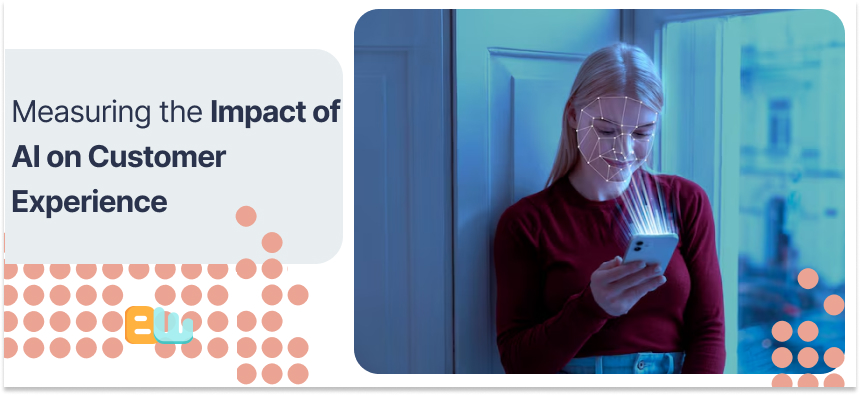
Implementing AI in your customer journey mapping is just the beginning. It is also essential to measure how it affects the overall customer experience. To do this, monitor key performance indicators (KPIs) that show changes in customer satisfaction, engagement, and business results.
You should measure metrics like customer satisfaction scores (CSAT), Net Promoter Score (NPS), customer effort score (CES), and conversion rates. These will help you see how AI has influenced the customer experience. Look for positive trends in these KPIs. They will tell you if your AI strategies are leading to good results. Remember, using data-driven insights is essential for understanding the true impact of your AI efforts.
Key Performance Indicators (KPIs) for AI Initiatives
Monitoring key performance indicators (KPIs) is very important to understand how successful AI projects are—metrics such as customer satisfaction, conversion rates, and retention show how AI affects the customer journey. Looking at customer feedback through sentiment analysis and checking interactions at various touchpoints gives us valuable insights.
Moreover, measuring how well AI tools improve customer engagement and personalized experiences is key. When organizations align their KPIs with business goals and optimize their AI algorithms, they can use AI and automation effectively in customer journey mapping. Better KPIs show the competitive edge that comes from using AI.
Case Studies: Success Stories of AI in Journey Mapping
Real-world examples show how businesses in different fields use AI to improve their customer journey mapping, which helps them achieve accurate results. For example, a top online store used an AI recommendation engine that looked at customer browsing and purchase history to suggest products they might like.
The outcome? They saw a significant boost in conversion rates and customer satisfaction. Shoppers found the suggestions fitting and helpful. In another case, a telecom company used AI to spot customers likely to leave. By looking at usage patterns and engagement data, they could predict which customers might switch and reach out to them with tailored offers. This reduced churn rates and built stronger customer loyalty.
These examples highlight the benefits and competitive advantages businesses can gain by using AI in customer journey mapping. From better recommendations to lower churn rates, increased conversion rates, and improved customer service, AI helps companies create great customer experiences, which drives business growth.
Conclusion
In summary, using AI and automation in customer journey mapping is essential for any business that wants to improve personalization. It helps with data analysis and adjusting to changes in customer behavior. By finding key touchpoints and using predictive analytics, businesses can create customized experiences for many customers. To use AI, companies should collect and look at customer data, use AI tools for journey mapping, and make adjustments. There are challenges like data privacy concerns and skill gaps. However, tracking AI’s effectiveness using KPIs and learning from successful cases can enhance customer experiences. In today’s digital world, adopting AI for journey mapping is necessary for companies that want to stay competitive.
